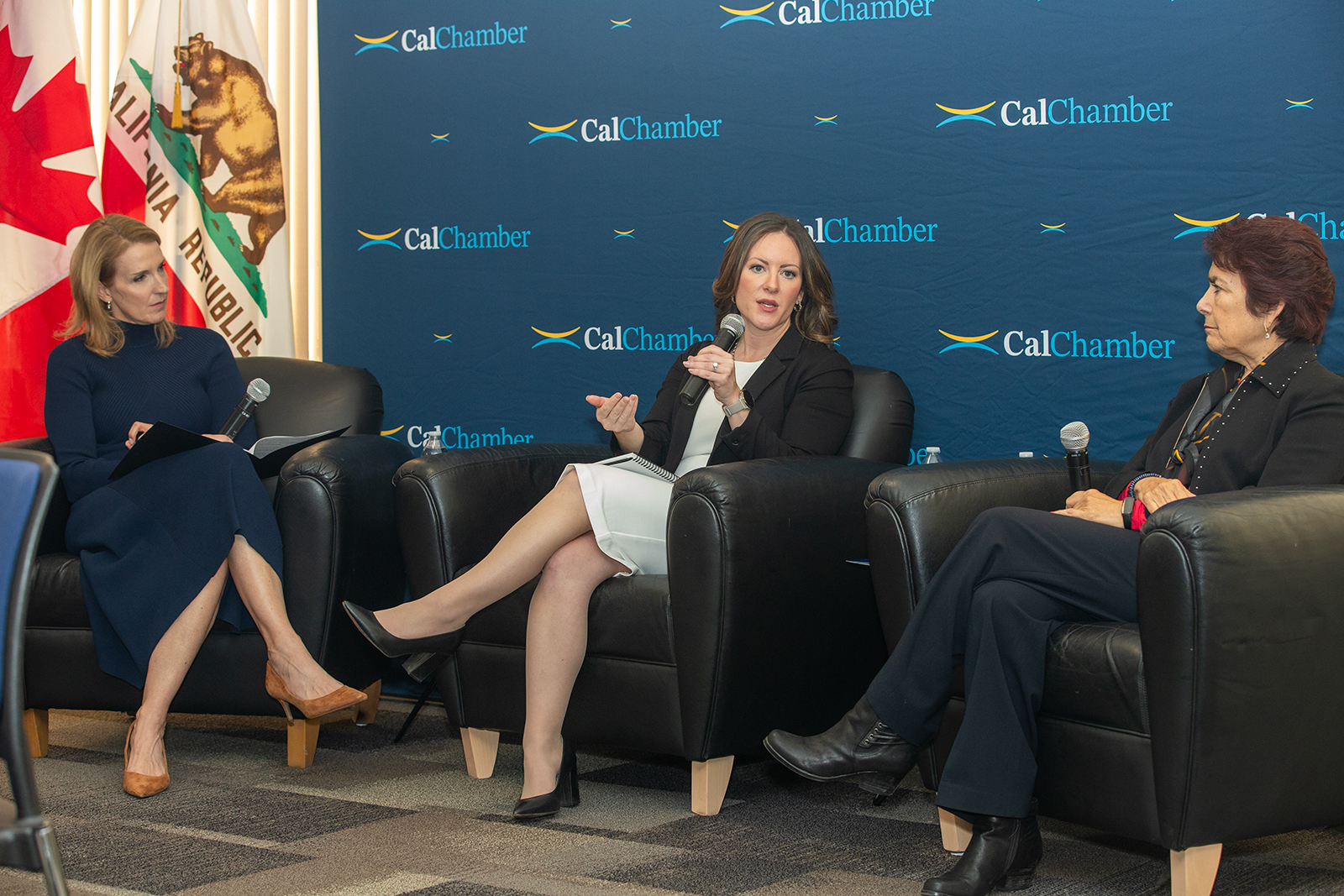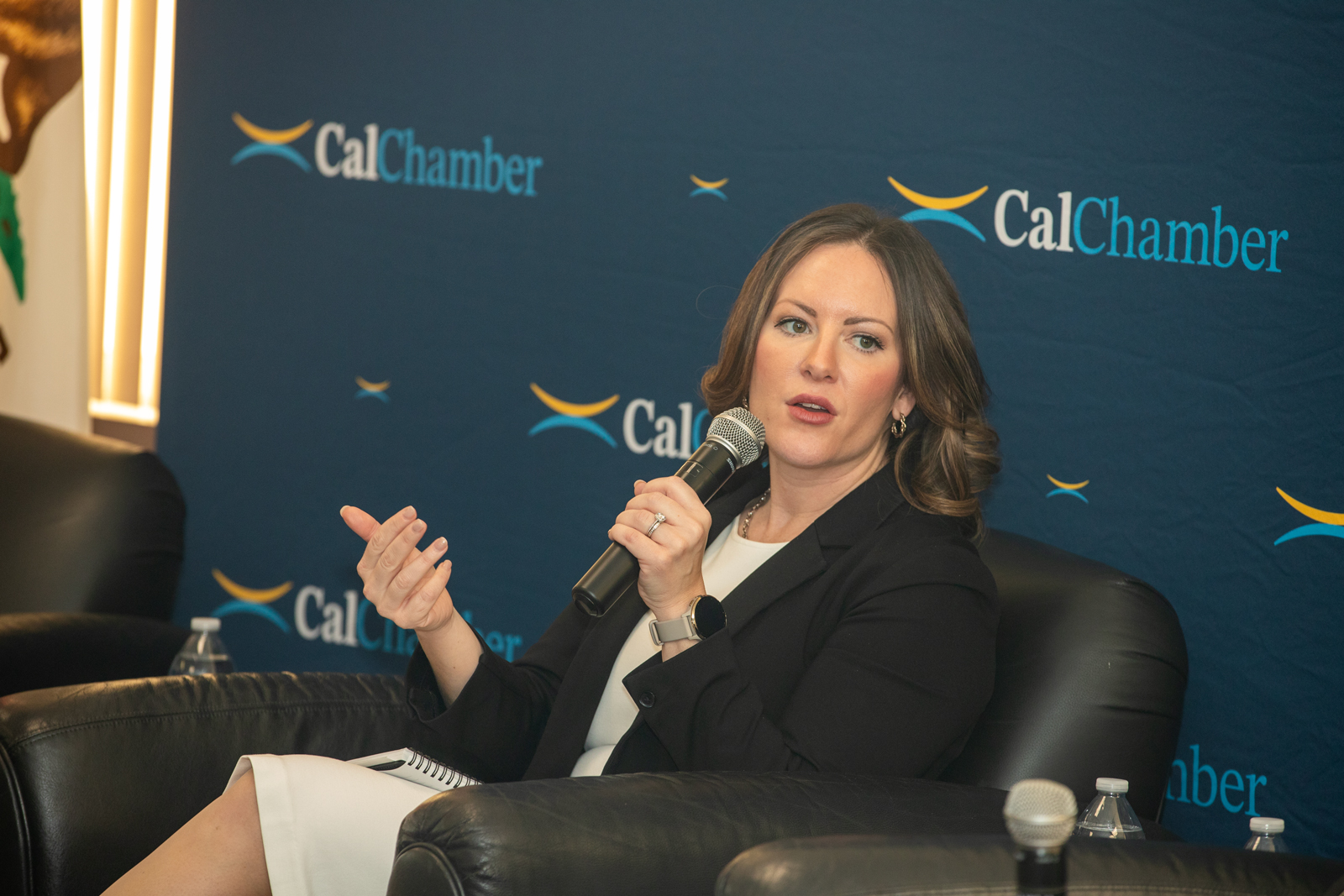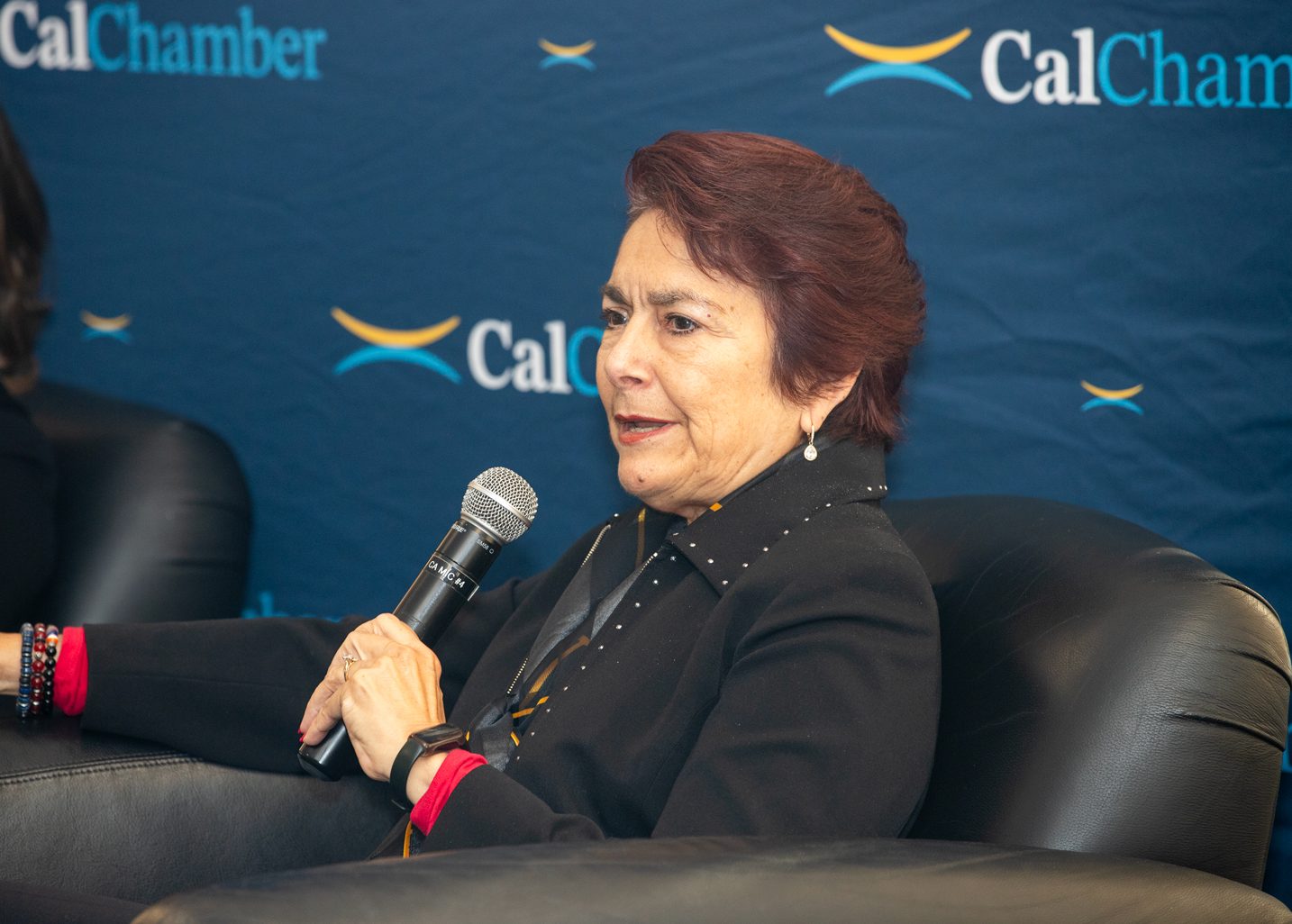
This week, the California Chamber of Commerce and the Consulate General of Canada in San Francisco hosted a talk on the ways Canada and California are shaping the future of carbon removal and hydrogen innovation.
The panel was moderated by CalChamber President and CEO Jennifer Barrera and featured Alberta Minister of Environment and Protected Areas Rebecca Schulz and California Senator Anna Caballero. Consul General Rana Sarkar provided introductory remarks at the start of the event.
In attendance were nearly 90 business and government leaders, including California Senator Roger Niello; California Assemblymembers Mike Fong and Gregg Hart; CalChamber Board Members Jennifer Haley, president and CEO of Kern Energy (see LinkedIn post,), and Christopher Holben, president of Runyon Saltzman, Inc.; Alberta Senior Representative to the U.S. James Rajotte; and Chief of Staff to the Alberta Minister of Environment and Protected Areas Christopher Thresher.

Consul General Rana Sarkar
Consul General Rana Sarkar began his remarks by expressing heartfelt condolences for those affected by the devastating wildfires in Southern California, emphasizing Canada’s solidarity with the region. He shared that Canadian Prime Minister Justin Trudeau had spoken with California Governor Gavin Newsom to offer assistance, with Canada already coordinating resources to help.
The Consul General highlighted the longstanding collaboration between Canada and California, particularly in firefighting efforts. He noted that the province of Quebec has a 40-year history of providing water bombers (super-scooper aircraft) to assist in wildfire fighting, and other provinces like British Columbia and Alberta have also contributed aircraft and firefighters. More than 60 firefighters, along with specialized staff and equipment, were deployed to support the response.
Turning to the broader context of energy collaboration, Sarkar underscored the importance of the partnership between Canada and California, particularly in energy innovation, carbon removal, and hydrogen energy. He expressed gratitude to the CalChamber for its ongoing support in fostering business relationships between Canada and California, highlighting that trade between the two regions exceeds $53 billion annually, supporting more than 64,000 jobs. Sarkar also emphasized Canada’s significant role as a market for California’s agricultural products, particularly nuts, fruits, and vegetables.
In his remarks, Sarkar briefly addressed the current dynamics of the Canada-U.S. relationship, describing it as a “lively” time due to ongoing discussions on issues such as border security and tariffs.
He affirmed that Canada is committed to ensuring a secure and efficient border, noting the Canadian government’s investment of $1.3 billion in border improvements. He also cautioned against the potential economic impact of proposed tariffs, stressing that such measures would raise costs and hinder growth.
Sarkar concluded by stressing the need for deeper cooperation between Canada and the U.S. to meet the challenges of the coming decades, particularly in the areas of energy and climate change. He expressed enthusiasm about ongoing discussions and partnerships, particularly in the context of carbon capture, utilization, and storage (CCUS) and other environmental innovations.

Carbon Capture, Hydrogen
Canada’s Progress
At the start of the panel discussion, Alberta Minister of Environment and Protected Areas Rebecca Schulz highlighted some of Alberta’s environmental progress, describing the province as Canada’s “energy capital.”
Alberta’s achievements include surpassing its methane emission reduction goal by 53% — three years ahead of schedule — through collaboration with industry rather than punitive measures. She also mentioned Alberta’s success in reducing electricity emissions by 53%, cutting per-barrel oil and gas intensity by almost 25%, and advancing renewable energy investments, with over 80% of Canada’s recent renewable energy investments occurring in Alberta.
In addition to renewable energy, Schulz discussed Alberta’s leadership in geothermal energy and its advancements in hydrogen production, which accounts for a quarter of the entire U.S. output. She also noted Alberta’s significant achievements in carbon capture, having safely sequestered 14 million tons of CO2 over the past decade. These efforts, according to Schulz, reflect Alberta’s commitment to environmental stewardship while balancing the realities of energy affordability and reliability, especially during harsh winters when natural gas plays a crucial role in heating homes.
The Minister stressed the importance of addressing both environmental and affordability concerns by partnering with industry, citing Alberta’s Tier Program, which incentivizes emissions reductions and reinvests funds into technological advancements like hydrogen vehicles, methane emissions reduction, small modular nuclear, and geothermal energy.
Schulz expressed optimism about the potential for further collaboration with California, recognizing alignment in energy goals and opportunities for mutual learning in technology, regulation, and policymaking. She concluded by underscoring the value of working together to meet both environmental and energy needs.

When asked by Barrera about Alberta’s carbon pricing and emissions reduction strategy, Schulz explained that Alberta was the first jurisdiction to implement both a carbon emissions plan and a carbon price, using a levy based on benchmarks tailored to individual facilities, reflecting their specific industry and emissions profiles.
This flexibility is appreciated by businesses, she said, as they can either pay the obligation or use credits in the carbon market. The funds generated from this system are reinvested into technology and innovation, addressing taxpayer concerns about affordability.
Additionally, Alberta runs competitions through Emissions Reduction Alberta to fund projects in areas like industrial emissions, hydrogen, and agricultural challenges, helping to de-risk investments and foster innovation.

California Efforts
Senator Anna Caballero, who represents Salinas, spoke about California’s cap-and-trade system and the Low Carbon Fuel Standard (LCFS), which are designed to reduce carbon emissions and encourage innovation.
While these programs have been successful in promoting clean energy solutions, they have also led some companies to leave California for states like Louisiana and Texas, where permits are easier to obtain and projects can move forward more quickly. She emphasized the need for California to streamline its permitting process to retain innovation within the state.
Caballero also highlighted the challenges facing her district in California’s Central Valley due to climate change, which could lead to the loss of up to 1 million acres of agricultural land. She expressed concern about the impact on local communities, especially small, Latino farmworker towns that depend on agriculture for jobs.
While solar energy has been proposed as a solution, she pointed out that it does not provide long-term economic benefits to the local community, as it does not create sustainable jobs and the energy generated does not benefit residents directly.
Instead, Caballero pointed to underground carbon storage and hydrogen production, which she believes could decarbonize hard-to-reduce sectors like aviation and trucking while creating jobs in the valley. She referenced a recent trip to Alberta, where she observed successful carbon capture initiatives, and expressed hope that California could learn from Alberta’s progress and forge stronger partnerships to address climate change.
Senator Caballero and Minister Schulz both underscored the importance of clear communication about the benefits of these technologies to local communities, emphasizing job creation, environmental safety, and the need for broader regional and international cooperation.
The panel also discussed the potential for hydrogen and carbon capture projects to bring long-term economic and environmental benefits, especially in areas affected by the energy transition.

